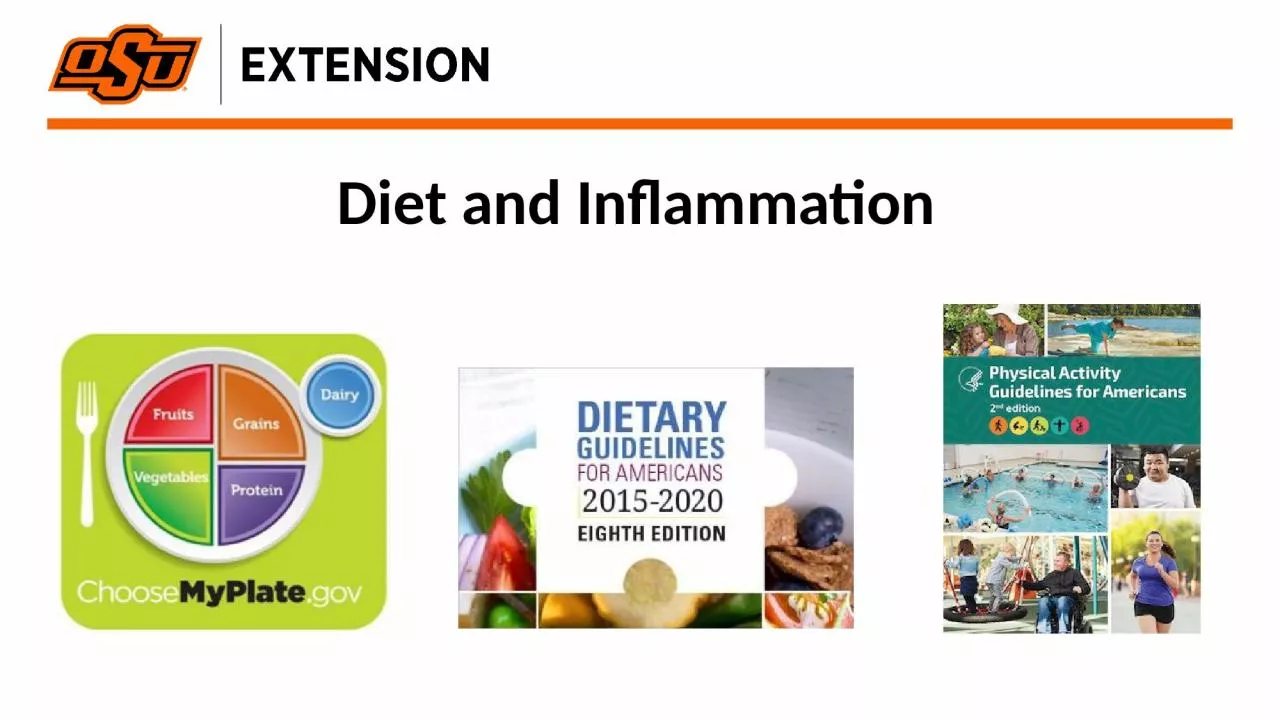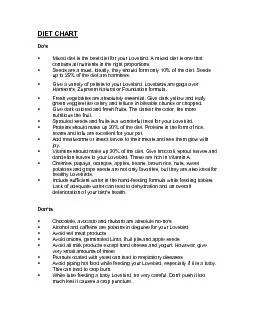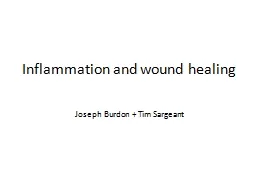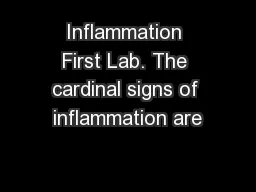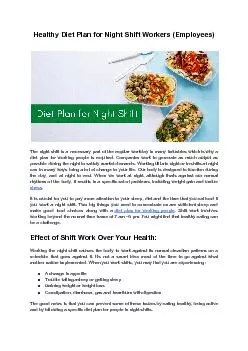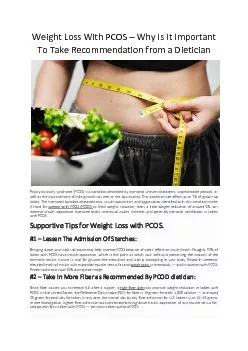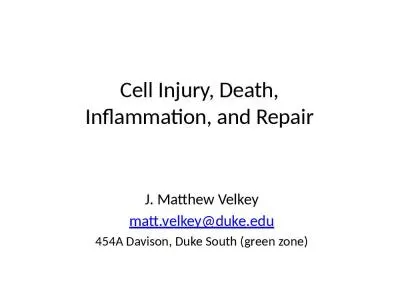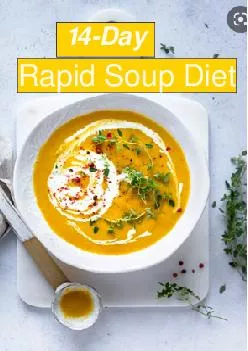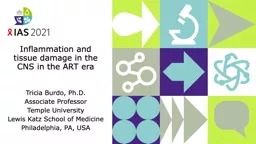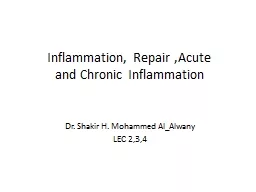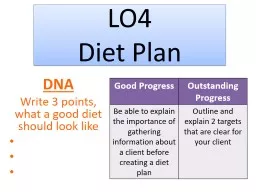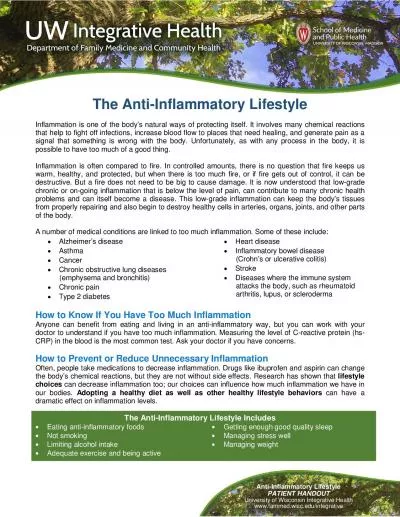PPT-Diet and Inflammation Inflammation
Author : jade | Published Date : 2022-07-15
Inflammation is a set of symptoms that include pain swelling heat and redness of an affected organ or tissue It is the natural way the bodys immune system responds
Presentation Embed Code
Download Presentation
Download Presentation The PPT/PDF document "Diet and Inflammation Inflammation" is the property of its rightful owner. Permission is granted to download and print the materials on this website for personal, non-commercial use only, and to display it on your personal computer provided you do not modify the materials and that you retain all copyright notices contained in the materials. By downloading content from our website, you accept the terms of this agreement.
Diet and Inflammation Inflammation: Transcript
Download Rules Of Document
"Diet and Inflammation Inflammation"The content belongs to its owner. You may download and print it for personal use, without modification, and keep all copyright notices. By downloading, you agree to these terms.
Related Documents

